Post by markeb01 on Jun 27, 2009 22:10:53 GMT -7
So many people have asked about the front suspension swap in my 1960 GMC short stepside some text and photos of the swap might be helpful. The quality of the photos isn’t the best as the temperature was never higher than 18 degrees in the shop when I did the installation which prevented cleaning anything.
The newer front suspension is from a 1978 Chevy. It is my understanding anything from 1973-1987 (Chevy or GMC) will fit. (Actually anything from 63-72 should also fit, but these years don’t provide disc brakes).
I wanted 5 lug wheels and disc brakes, but the main reason I did the conversion was to eliminate the ball bearing wheel bearings. At the time they were costing almost $100 a pair and burned out with regularity. The newer roller bearings last forever. The 1960 ball joints and steering parts are also rare and expensive.
It can be seen in the photos the swap was completed with the engine still in place. Two chunks of surplus frame rail were simply bolted to the early 1955 style motor mount holes in the front of the block, the engine was rested on top of the frame, and the motor mounts, towers and suspension crossmember were removed. Although it can be done with the engine in place it’s not recommended. It would be far more convenient with the engine out of the way.
For the newer crossmember/suspension a local wrecking yard sliced the frame off just ahead of the firewall. I did not want any 1960 steering components to remain. There are conversion adapters available to mix and match the steering linkage, but this seemed like a waste of money since everything was being replaced anyway.
In order to make sure all the later components fit in exactly the right place, once the donor suspension was disassembled, templates were made out of manila file folders indicating the mounting hole locations from the donor frame rails. At various times during the swap these templates were used to mark holes - for the idler arm, flexible brake hoses, sway bar, etc. I cleaned up and rebuilt the donor suspension well ahead of the installation.
The holes for the brake hoses came first which took several hours. These holes are half round and half hex to prevent the hose from rotating. I made the hex portion with a small triangle file and a lot of patience until the hose end fit. There are other ways to do this but I wanted everything to fit like it did in the 78. Connecting the hard line to the frame side of the hose was rather difficult however and required a lot of wrench work through a small opening in the top of the frame. (There are other and probably easier ways to mount the hoses).
Before removing the 1960 suspension I marked the fender and floor identifying the centerline of the spindles so I’d make sure to put the new suspension in the same place. The 1960 crossmember came out semi-easy. The bolts came right out, but the crossmember was stuck pretty tight and required use of a cable engine puller. Initially the rear torsion bar crossmember was left in place. Subsequently it was realized this was unnecessary and removed for improved exhaust clearance.
The new suspension crossmember was put into place and it was discovered two of the holes lined up. I believe one was underneath and the other was the upper rear which needed to be slotted. I’ve marked the new holes on one of the photos for clarification. Again the manila templates were used to confirm location. It appears looking at the pictures the two large holes required opening up a bit to provide clearance/access for the upper control arm bolts. The new crossmember/suspension was then bolted into place.
It was immediately discovered the upper shock brackets were no longer in the correct orientation causing the shock to bind. They needed to be moved to the rear at more of an angle. (One of the photos is marked showing the old and new locations). The factory welds were cut free with a Dremel tool and cutoff wheel. The truck was lowered to the ground to bring the suspension to ride height, the brackets were bolted to the shocks, and the brackets were centered midway between their front and rear travel, and the frame marked. It turned out the original brackets had two holes drilled in them, as if the factory originally intended to bolt them on. I simply used these holes and attached the brackets with grade 8 bolts. This was a bit tricky since reaching the inside of the frame to hold the nuts required the use of 2 wrenches taped together. They’ve been on over 10 years and the bolts have worked fine. Welding might have been easier but that capability wasn’t available.
The last step was the steering linkage. As shown in the photos the correct location for the later idler arm was marked using the manila template, and the steering linkage bolted in perfectly. I had previously installed power steering using the REZ Engineering kit which is designed for the 63 up frame. A few solid steel spacers and it worked fine on the 60 frame.
One last note regards spindle length. I don’t know when they changed, but the 78 steering knuckles have longer spindle pins that an 83. I discovered this as I had an 83 at the time this swap was performed, which was a bummer for me. My setup was running rally wheels with the small police caps. The grease caps on the longer 78 spindles had to be flattened to allow the hubcaps to seat. Ultimately the rally wheels were replaced with American 5 spokes so this no longer matters. Had I known there was a difference I would have gone for the newer (shorter) spindles. This is just something to consider if it matters in your application.
This project could probably be completed in a weekend if planned out ahead of time. Hope this helps.
The newer front suspension is from a 1978 Chevy. It is my understanding anything from 1973-1987 (Chevy or GMC) will fit. (Actually anything from 63-72 should also fit, but these years don’t provide disc brakes).
I wanted 5 lug wheels and disc brakes, but the main reason I did the conversion was to eliminate the ball bearing wheel bearings. At the time they were costing almost $100 a pair and burned out with regularity. The newer roller bearings last forever. The 1960 ball joints and steering parts are also rare and expensive.
It can be seen in the photos the swap was completed with the engine still in place. Two chunks of surplus frame rail were simply bolted to the early 1955 style motor mount holes in the front of the block, the engine was rested on top of the frame, and the motor mounts, towers and suspension crossmember were removed. Although it can be done with the engine in place it’s not recommended. It would be far more convenient with the engine out of the way.
For the newer crossmember/suspension a local wrecking yard sliced the frame off just ahead of the firewall. I did not want any 1960 steering components to remain. There are conversion adapters available to mix and match the steering linkage, but this seemed like a waste of money since everything was being replaced anyway.
In order to make sure all the later components fit in exactly the right place, once the donor suspension was disassembled, templates were made out of manila file folders indicating the mounting hole locations from the donor frame rails. At various times during the swap these templates were used to mark holes - for the idler arm, flexible brake hoses, sway bar, etc. I cleaned up and rebuilt the donor suspension well ahead of the installation.
The holes for the brake hoses came first which took several hours. These holes are half round and half hex to prevent the hose from rotating. I made the hex portion with a small triangle file and a lot of patience until the hose end fit. There are other ways to do this but I wanted everything to fit like it did in the 78. Connecting the hard line to the frame side of the hose was rather difficult however and required a lot of wrench work through a small opening in the top of the frame. (There are other and probably easier ways to mount the hoses).
Before removing the 1960 suspension I marked the fender and floor identifying the centerline of the spindles so I’d make sure to put the new suspension in the same place. The 1960 crossmember came out semi-easy. The bolts came right out, but the crossmember was stuck pretty tight and required use of a cable engine puller. Initially the rear torsion bar crossmember was left in place. Subsequently it was realized this was unnecessary and removed for improved exhaust clearance.
The new suspension crossmember was put into place and it was discovered two of the holes lined up. I believe one was underneath and the other was the upper rear which needed to be slotted. I’ve marked the new holes on one of the photos for clarification. Again the manila templates were used to confirm location. It appears looking at the pictures the two large holes required opening up a bit to provide clearance/access for the upper control arm bolts. The new crossmember/suspension was then bolted into place.
It was immediately discovered the upper shock brackets were no longer in the correct orientation causing the shock to bind. They needed to be moved to the rear at more of an angle. (One of the photos is marked showing the old and new locations). The factory welds were cut free with a Dremel tool and cutoff wheel. The truck was lowered to the ground to bring the suspension to ride height, the brackets were bolted to the shocks, and the brackets were centered midway between their front and rear travel, and the frame marked. It turned out the original brackets had two holes drilled in them, as if the factory originally intended to bolt them on. I simply used these holes and attached the brackets with grade 8 bolts. This was a bit tricky since reaching the inside of the frame to hold the nuts required the use of 2 wrenches taped together. They’ve been on over 10 years and the bolts have worked fine. Welding might have been easier but that capability wasn’t available.
The last step was the steering linkage. As shown in the photos the correct location for the later idler arm was marked using the manila template, and the steering linkage bolted in perfectly. I had previously installed power steering using the REZ Engineering kit which is designed for the 63 up frame. A few solid steel spacers and it worked fine on the 60 frame.
One last note regards spindle length. I don’t know when they changed, but the 78 steering knuckles have longer spindle pins that an 83. I discovered this as I had an 83 at the time this swap was performed, which was a bummer for me. My setup was running rally wheels with the small police caps. The grease caps on the longer 78 spindles had to be flattened to allow the hubcaps to seat. Ultimately the rally wheels were replaced with American 5 spokes so this no longer matters. Had I known there was a difference I would have gone for the newer (shorter) spindles. This is just something to consider if it matters in your application.
This project could probably be completed in a weekend if planned out ahead of time. Hope this helps.

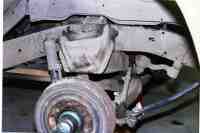
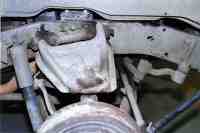
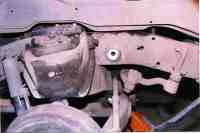
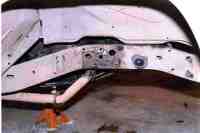

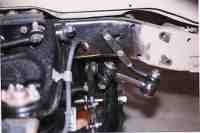
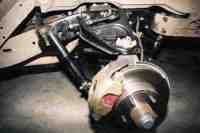
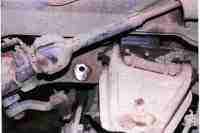
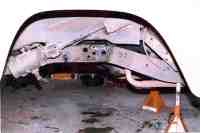
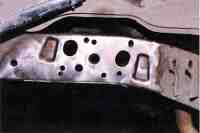
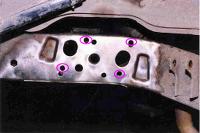
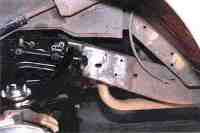
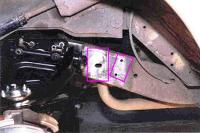


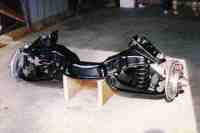
 anyone know if its possible to turn my c10 into 4x4 ?
anyone know if its possible to turn my c10 into 4x4 ?